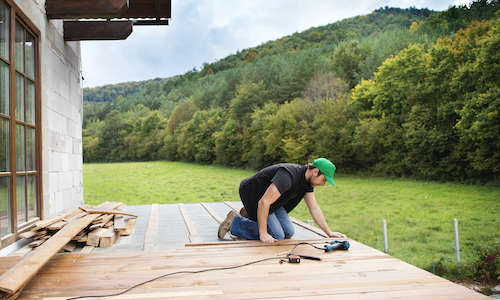
Construction employment was up across the nation in the early months of 2016, according to the Associated General Contractors of America – a good sign for the industry, which currently suffers from labor and inventory shortages. So, if you sell new construction – the future is bright.
“Certainly we are seeing labor supply issues,” said Michael Neal, senior economist for the National Association of Homebuilders, adding, “in particular, labor shortages.”
The availability of labor, particularly skilled labor, has been a serious concern for the construction market since the downturn. After houses stopped getting built, construction laborers left the market in droves, looking for employment elsewhere – which they found in an exploding energy sector. Since 2007, 1.3 million workers have left construction.
In a NAHB survey published late last year, builders ranked the “significant problems” facing the industry heading into the new year. The availability and cost of labor was No. 1, with 76 percent of builders agreeing.
From Feb. 2015 to Feb. 2016, 43 states and Washington, D.C. recorded construction job growth, AGCA’s report confirmed. The U.S. Labor Department reported additional construction employment increases in 27 states between this past January and February.
Atlanta gains 7,000+ construction jobs
“In most of the country, construction continues to outpace other industries in adding jobs,” said Ken Simonson, chief economist for the association. He added that boosts to employment stem from a “wide variety of influences,” including “weather that was more favorable this February than a year ago.”
| State | Feb. 2015 | Feb. 2016 | 12-mo. % change | 12-mo. gain/loss |
|---|---|---|---|---|
| Florida | 418,600 | 444,400 | 6.20% | 25,800 |
| Georgia | 164,400 | 173,400 | 5.50% | 9,000 |
| Illinois | 209,900 | 215,600 | 2.70% | 5,700 |
| Massachusetts | 133,100 | 147,700 | 11% | 14,600 |
| Texas | 679,600 | 689,000 | 1.40% | 9,400 |
Georgia was among the top-performing states for construction job growth, adding 9,000 jobs in February – a 5.5 percent increase from 164,400 to 173,400. It was the 13th highest increase in the country.
| Metro | Jan. 2015 | Jan. 2016 | 12-mo. % change | 12-mo. gain/loss |
|---|---|---|---|---|
| Atlanta | 102,900 | 110,500 | 7% | 7,600 |
| Boston | 57,300 | 63,100 | 10% | 5,800 |
| Chicago | 106,600 | 112,800 | 6% | 6,200 |
| Houston | 208,800 | 220,400 | 6% | 11,600 |
| Miami | 37,800 | 42,900 | 13% | 5,100 |
The state’s improvements only compliment construction gains in its biggest metro, Atlanta, which, in January, experienced a 7 percent, or 7,600, year-over-year jump.
Filling jobs with workers
AGCA CEO Stephen Sandherr touted the construction industry’s growth in a statement accompanying the association’s report, but voiced concerns over whether the ambitions of builders would collapse under the real availability of workers.
“The question is whether firms will be able to continue hiring despite the challenge of finding experienced workers interested in pursuing careers in construction,” he said.
The association’s chief executive went on to emphasize the importance recruiting will play in satisfying the demand for building, referring specifically to programs targeting high school students. And according to NAHB senior economist Neal, that is exactly what NAHB is doing.
“We are encouraging younger people to go to trade schools and acquire those kinds of skill sets,” he said.
In Chicago, the Home Builders Association of Greater Chicago is making a push to set up collegiate chapters and introduce students to the prospect of a job in construction. According to association president Patrick Coveny: “we’re making inroads, but it takes a while. It’s not going to be an immediate fix.”
One sign of hope is that even in the face of shortages, builder confidence is at its highest level in 10 years.
